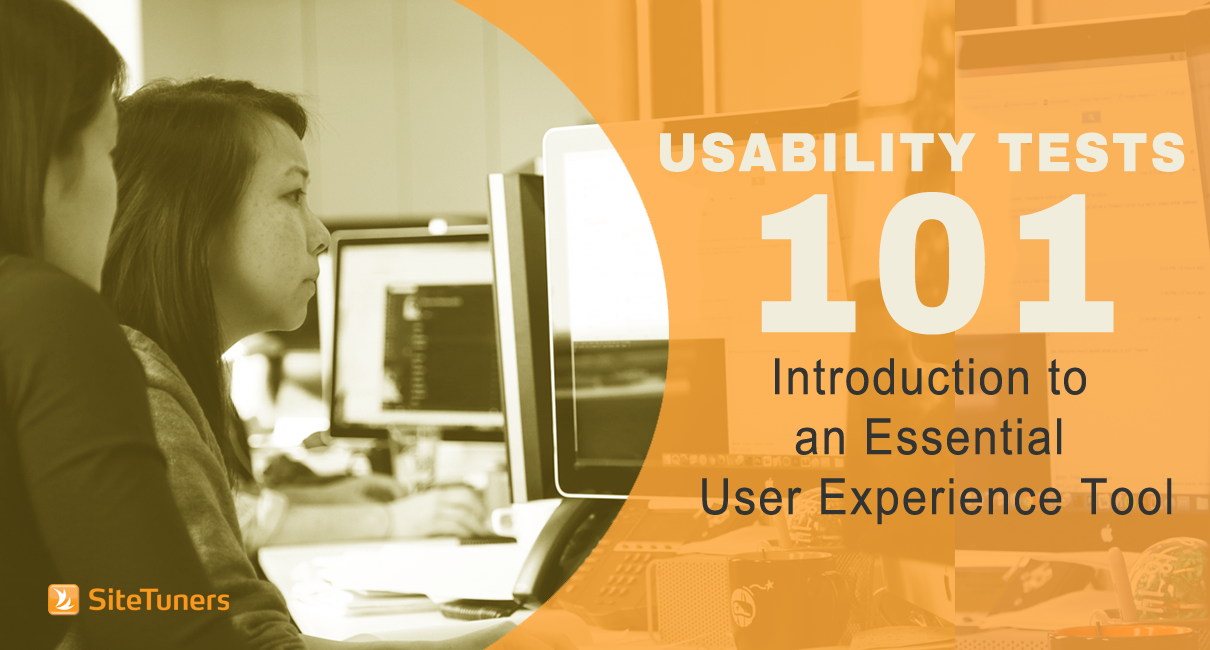
If you’re launching new features on the web site or improving a section that’s failing, the most critical technique available to you is arguably the usability test. If you’re not actively conducting usability tests as part of your user experience arsenal, you’re missing out on one of the best options available to you.
A significant number of organizations don’t conduct these tests because they sound expensive and complicated, so they get deferred into backburner projects, never to surface again. In reality, these tests shouldn’t scare off most companies at all:
- You don’t need hundreds of results, like with surveys
- The participant mental models don’t need to be THAT perfectly aligned to your potential customer base
- Finding areas to test isn’t difficult at all
- Most companies with analytics teams and project managers don’t need an external firm to run the tests
Given all that, it shouldn’t be intimidating to most companies. That said, if you’re new to usability tests, you do have to be very organized about how you approach the tests.
Find the features to Fix
You can run usability tests for new features, or you can use the tests to fix what’s most broken on the site. That will ensure that your tests actually move the needle on important things.
You have a few tools at your disposal to find those areas:
- If you use Google Analytics, you can find the pages with the most visits and the highest bounce rate. You can use a feature called Weighted Sort to find those quickly and painlessly. We’ve talked about that feature before, so you may want to read up on the useful Google Analytics feature here.
- If you use surveys on your web site, you can ask your users directly about what’s broken on your web site. If you need help with that, you can read up on survey questions that you should be asking.
What survey questions should you ask your web visitors? |
Once you know what you’ll be testing, it’s time to create your questions.
Create the Usability Test Questions
The question list should take users anywhere from 30 minutes to a little more than an hour to get through. Remember, you don’t need to cover all the functionalities of the site- keep the conversation about the features that you’re testing.
While building the “script” for the usability test, remember to put in verbiage about there being no wrong answers – you want the participants to be as open and honest as possible.
Find the Participants
This is the part that’s intimidating to a lot of organizations, but it really shouldn’t be. When finding participants for usability tests, you should remember these guidelines:
- The matching to your customers doesn’t need to be too exact. Most of the time, participants given a task will run into the same issues.
- You’ll only need 15 participants. You can run 3 tests with 5 participants for each test, and uncover most of what’s wrong with the area.
- Incentives don’t have to be grand. Gift certificates worth 30-50 dollars should be fine, and at the low end you can get all the participants you need for less than 500 bucks.
Remember that usability tests shouldn’t be prohibitively expensive. If you can keep the costs down, you’ll be able to run more of these regularly.
Conduct the Usability Test
When recording your 30-minute to one hour session, remember not to lead the user into making particular observations. You need to make sure they tell you everything they can about their task, as they experience going through it, flaws and all:
- Make them perform the assigned task step by step
- Make the participants talk aloud about expectations for each screen
-
- Ask about expectations about a page before visitors click through
- After they click through, ask them whether their expectations have been met
What you should have at the end of this is a set of observations about why things failed. Most of the time, when you have the “why,” the fixes will be quick to implement.
Putting It All Together
Usability tests should be more widely utilized than they currently are. If your organization doesn’t use these yet, it’s time to get started.
If you …
- find the right areas to test,
- keep the tests low-cost,
- run the tests often, and
- make participants talk about what they expect
… you’ll be on your way to fixing the biggest issues on your web site.


